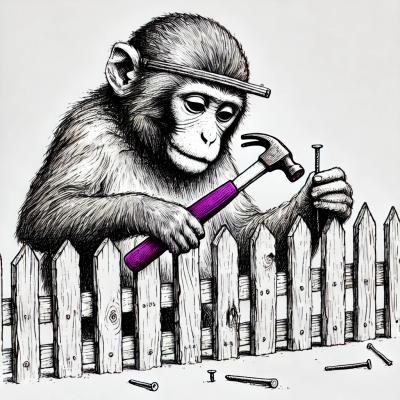
Security News
Vite Releases Technical Preview of Rolldown-Vite, a Rust-Based Bundler
Vite releases Rolldown-Vite, a Rust-based bundler preview offering faster builds and lower memory usage as a drop-in replacement for Vite.
A thin wrapper around Google Chart API that tries not to invent a new language for describing charts.
django-chart-tools is a simple app for creating charts in django templates using Google Chart API. It doesn't try to invent another language for defining charts unlike other Google Chart API wrappers. It instead make it easy to leverage the power of existing user-friendly chart-building tools like http://dexautomation.com/googlechartgenerator.php
.. warning::
Please note that Image Chart API (that django-chart-tools is using)
is deprecated by Google.
::
$ pip install django-chart-tools
or ::
$ easy_install django-chart-tools
or grab the latest and the greatest version from bitbucket (https://bitbucket.org/kmike/django-chart-tools)
Then add 'chart_tools' to your INSTALLED_APPS.
Generate a chart you like using http://dexautomation.com/googlechartgenerator.php or by following API docs https://developers.google.com/chart/image/docs/gallery/chart_gall.
Copy&paste output to your template and wrap it with {% chart %} ... {% endchart %} tags::
{% load chart_tags %}
{% chart %}
http://chart.apis.google.com/chart
?chxr=0,0,160
&chxt=y
&chbh=a
&chs=440x220
&cht=bvs
&chco=4D89F9
&chds=0,160
&chd=t:10,50,60,80,40,60,30
&chtt=Horizontal+bar+chart
{% endchart %}
You'll get the tag with generated chart in you template after rendering.
chart tag also allows cleaned-up version of the example above::
{% load chart_tags %}
{% chart %}
chxr=0,0,160
chxt=y
chbh=a
chs=440x220
cht=bvs
chco=4D89F9
chds=0,160
chd=t:10,50,60,80,40,60,30
chtt=Horizontal+bar+chart
{% endchart %}
Replace test data with your real data. For example, we want to provide real values. Change the test data in Image Chart Editor. The parameter we change will be highlited. It is 'chd' in our case. So now we replace 'chd' data with real data that comes from view::
{% load chart_tags %} {% chart %} chxr=0,0,160 chxt=y chbh=a chs=440x220 cht=bvs chco=4D89F9 chds=0,160 chd=t:{{ values|join:',' }} chtt=Horizontal+bar+chart {% endchart %}
That's all.
There is also up-to-date API reference from Google: https://developers.google.com/chart/image/docs/chart_params
I found plain copy-pasted html tag with some {{ variables }}
unmaintainable and unreadable so the {% chart %} was introduced.
so generated charts can be nicely formatted and it is possible to maintain them later.
Once you created a chart you like you'll possibly want to use it multiple times. The preferred way is to write inclusion template tag around your template::
from django import template
register = template.Library()
@register.inclusion_tag('chart_tools/bar_chart.html')
def bar_chart(values, captions, size='580x100', max_value=None):
max_value = max_value or max(values)
return {
'values': values,
'captions': captions,
'size': size,
'max_value': max_value,
}
This example bar_chart tag is included in django-chart-tools.
FAQs
A thin wrapper around Google Chart API that tries not to invent a new language for describing charts.
We found that django-chart-tools demonstrated a healthy version release cadence and project activity because the last version was released less than a year ago. It has 1 open source maintainer collaborating on the project.
Did you know?

Socket for GitHub automatically highlights issues in each pull request and monitors the health of all your open source dependencies. Discover the contents of your packages and block harmful activity before you install or update your dependencies.

Security News
Vite releases Rolldown-Vite, a Rust-based bundler preview offering faster builds and lower memory usage as a drop-in replacement for Vite.

Research
Security News
A malicious npm typosquat uses remote commands to silently delete entire project directories after a single mistyped install.

Research
Security News
Malicious PyPI package semantic-types steals Solana private keys via transitive dependency installs using monkey patching and blockchain exfiltration.